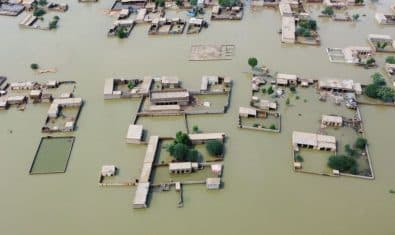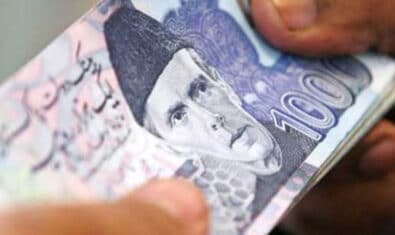Pakistan’s net public debt has crossed the PKR 18.28 trillion, rising about 35% during the tenure of the governing Pakistan Muslim League Nawaz (PML-N).
This was stated by the ministry of finance, in response to a question from Pakistan People’s Party (PPP) MNA Shahida Rehmani in the National Assembly last week.
“The volume of net public debt as on Sept 30, 2016 was PKR 18,277.6 billion,” the ministry’s responded.
Total public debt stood at PKR 13.48tr at the end of financial year 2012-13 — almost three years ago. The rise in net public debt has mostly being due to an almost 40% rise in domestic debt, which rose from PKR 8.686tr at the end of 2013 to PKR 12.14tr at the end of the first quarter of the current fiscal year (FY 2016-17).
The finance ministry sought to clarify this phenomena by claiming that the public debt was mainly obtained to finance the fiscal deficit and was approved by the parliament. Some of the financing had to be done in the form of external loans, to supplement the domestic resources required to accelerate the pace of economic development and make positive contributions towards developing the country’s infrastructural base.
“These loans were obtained for financing of projects of national importance, budgetary and balance of payments support, earthquake and floods, rehabilitation assistance and import of urea and crude oil,” the ministry said.
The ministry clarified that local debt was unending in nature and for the most part, renegotiated on an yearly basis, while majority of the external loans contracted by the current government were ‘economical’ and were dominated by long-term funding, which would be used to retire the corresponding amount of expensive domestic loans. External credits are reimbursed through budgetary designations in light of the remuneration calendar of each and every loan.
In its response, the ministry claimed that over the time period of last three years, it had been able to considerably reduce financial liabilities and had employed various growth supporting structural reforms. This had brought about development in the country’s debt refund ability and had allowed it to switch expenses. However, another driving reason behind these loans was to build external buffers to protect against exchange rate impulsiveness and to absorb external shocks.
Along with that, economic growth was expected to continue its exponential upward trend, the ministry claimed adding that development projects linked to the CPEC in the areas of energy and infrastructure were also anticipated to add an extra two percent points to GDP growth in the upcoming years.
Additionally, the ministry claimed that notwithstanding refunds by the current government of foreign loans worth over $12bn that were acquired by the previous government’s, foreign exchange reserves currently stood at over $23bn, up from the $11bn mark at the end of June 2013.The government also stated that it has effectively brought down the financial deficit from 8.2pc of the GDP in 2012-13 to 4.6pc in 2015-16, with a target to further restrict the budget deficit at 3.8pc of GDP at the end of the current fiscal year, and restrict it to 3.5pc by FY 2018-19.
Source: Dawn






















10th story on the same topic.
Mention new loans taken to pay off debts where Pakistan was paying interests over interests since decades. One sided story, ridiculing government isn’t the solution. Those who are doing it failed to complete their promises.
Satan and his minions at work. Save us Allah.